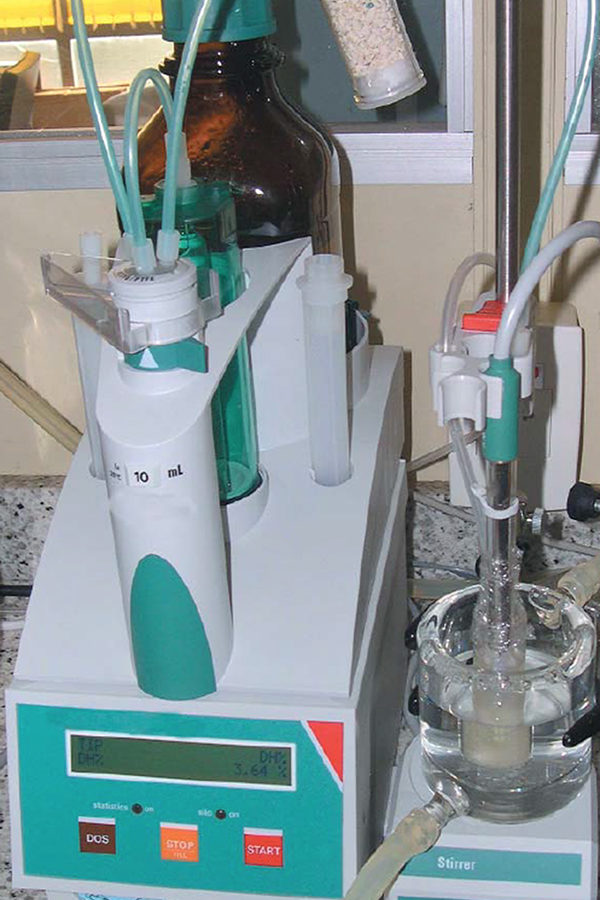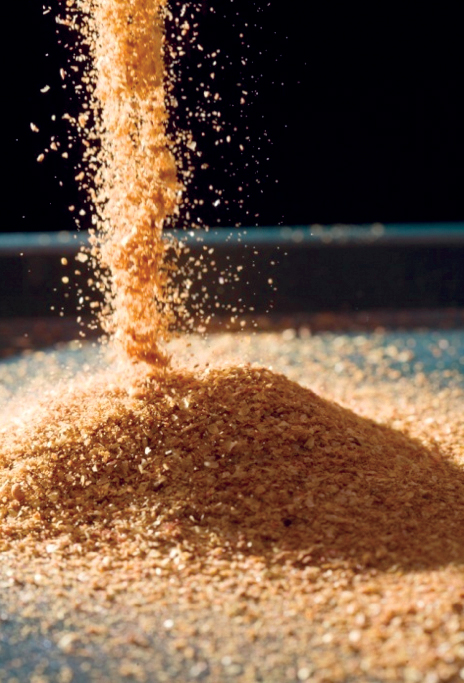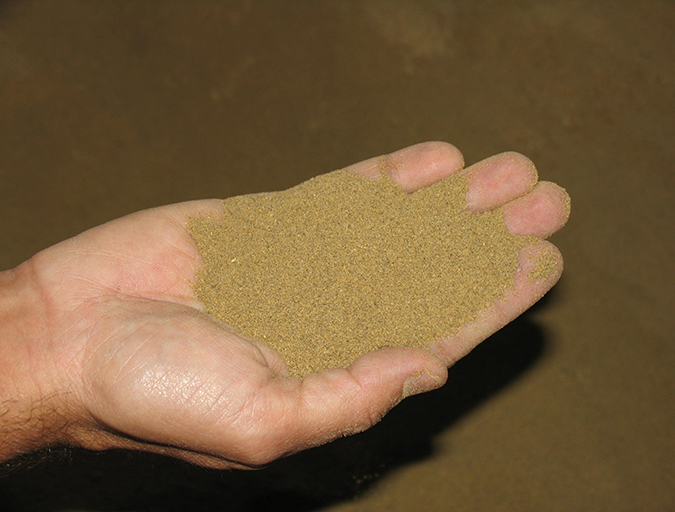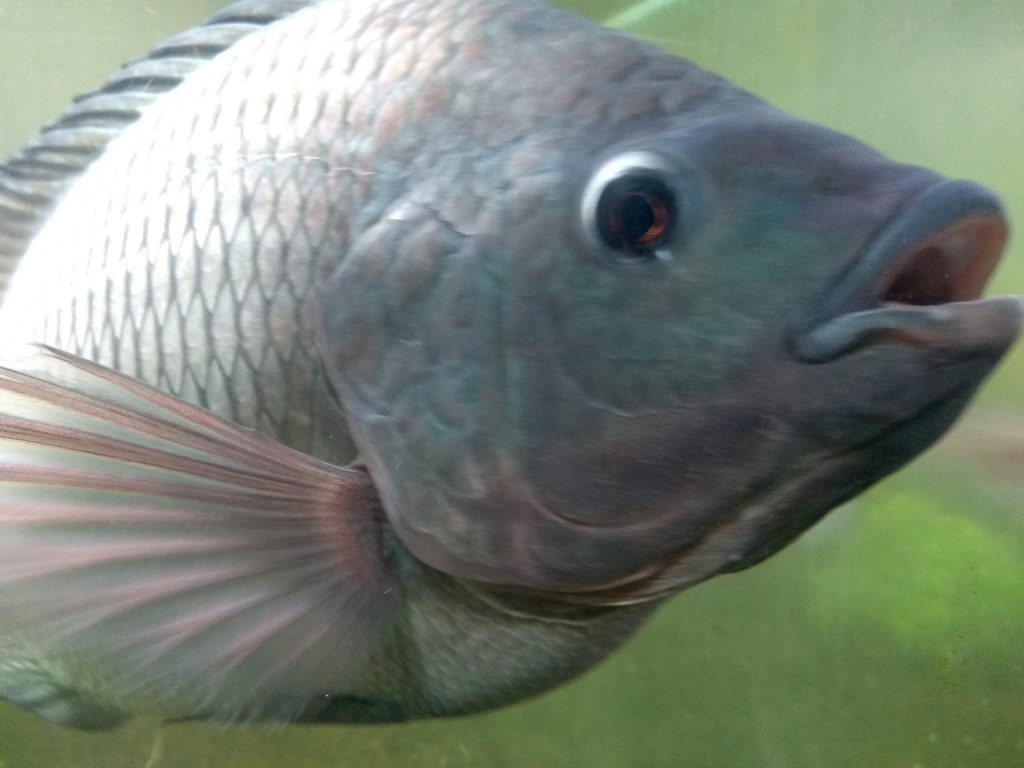Assay simulates digestion of a protein source by the enzymes of the target animal

of the target animal. (Photo by Daniel Lemos.)
As the aquaculture industry becomes increasingly conscious of costs and benefits, it is searching for more “functional” feeds, many of which are augmented with key ingredients and compounds that promote animal growth and survival. In addition, plant proteins are increasingly used as alternatives to proteins from animal sources.
The optimum production of feedstuffs with optimum dry matter conversion of feed to weight depends largely on ingredient quality and nutrient availability for the species in question. The determination of digestibility of major nutrients is one of the main steps in the evaluation of their bioavailability for a given species.
Measuring digestibility
Protein is the most important feed nutrient for aquaculture of high-value animals. One critical aspect in the development of cost-effective feed for any species is knowledge of the animal’s response to the protein and lipid (or energy) content of the feed.
Protein quality can be assayed by in vivo digestibility measurements or in vitro assays using proteolytic enzymes. Standard in vivo methods require live animal trials that are time consuming and usually require large numbers of animals. In vitro methods can provide an attractive alternative, because they allow the quick assessment of nutritional value and potential deleterious activity of any antinutritional compounds present in the test material.
To date, the bulk of the research associated with the assessment of feed ingredients used in aquaculture diets has focused on digestible amino acids. There is strong evidence that some methods of digestibility analysis are better at predicting digestible amino acids in vegetable and animal proteins.
Digestible energy
Cost per unit energy is the dominant cost pressure in the formulation of aquaculture diets, so it is pertinent to focus on the development of an assay for the assessment of available energy. As digestible energy is the easiest available energy parameter to measure in feed ingredients for shrimp and fish, it is a logical parameter on which to focus for this type of analysis.
In vitro assays
On the other hand, many in vitro assays have been used with varying degrees of success to evaluate protein and ingredient quality, including the potassium hydroxide solubility test, nitrogen water solubility test, urease assay, and pepsin digestibility assay. Of these, probably the most common and rapid in vitro digestibility test for measuring protein quality is the pepsin digestibility assay that dates back to the early 1950s.
A considerable body of research data relating protein to secondary productivity return in livestock has amassed since the mid-1940s. Yet, as good a predictor of productivity as the pepsin digestibility test is, when protein levels are constant but animal protein sources vary, productivity differences are seen.
Protein analyses of animal excreta have shown that less-productive animals excrete higher levels of protein than more-productive animals. The quantity, not the digestibility, of the protein is expressed in such tests. Indeed, digestibility not only varies by source of protein but also within a category. For example, one fishmeal can be more digestible than another.
As a result, the original “0.2 percent” pepsin method came about. However, studies have shown that pepsin digestibility analysis turns out higher digestibility rates than metabolic studies suggest, although, more dilute concentrations have been used in an attempt to correct for this difference. In essence, there is no reliable mathematical relationship between the digestibility of one pepsin dilution and another.
Promising technique
The evaluation of aquafeed ingredients may benefit from recent advances in methodologies applied to the in vivo and in vitro measurement of digestibility in feeds for terrestrial animals. One promising technique is the pH-stat in vitro determination of digestibility of feeds and feed ingredients.
The assay simulates digestion of a protein source by the enzymes of the target animal. A significant correlation between the pH-stat in the in vivo and in vitro digestibility values exists when proteins from the same animal or plant origin are compared. The relatively low-cost method provides accurate results, is not environmentally affected, and enables a higher number of analyses than live animal experiments for a given time.
Antinutritive substances, complex formations
Important to note is that some ingredients have a unique set of amino acids, along with other unwanted compounds, that contribute to the ration. The unwanted compounds, called antinutritive substances, can interfere with the digestion of the amino acids and therefore reduce the value of the ingredients.
Moreover, predictions of the digestibility of ingredients can be inaccurate because the relationship between in vivo and in vitro digestibility can be different. The physical structure of ingredients can be partially inaccessible to enzymatic action or the presence of antinutritive substances.
Enzymes split protein at specific junctions, but some antinutritive substances block these junctions, preventing proper digestion and reducing the value of the ingredient in a feedstuff. Cross-linkage formation reduces the rate of protein digestion, possibly by preventing enzyme penetration or blocking the sites of enzyme attack.
Another interaction that can affect the results of digestibility analyses is the formation of complexes between starches and lipids. Such formations, which can occur in situ in the digestive tracts of several aquatic species, are thought to decrease digestibility and response to ingested carbohydrates.
(Editor’s Note: This article was originally published in the December 2005 print edition of the Global Aquaculture Advocate.)
Now that you've reached the end of the article ...
… please consider supporting GSA’s mission to advance responsible seafood practices through education, advocacy and third-party assurances. The Advocate aims to document the evolution of responsible seafood practices and share the expansive knowledge of our vast network of contributors.
By becoming a Global Seafood Alliance member, you’re ensuring that all of the pre-competitive work we do through member benefits, resources and events can continue. Individual membership costs just $50 a year.
Not a GSA member? Join us.
Authors
-
Sergio Nates, Ph.D.
Zeigler Bros., Inc.
P.O. Box 95
400 Gardners Station Road
Gardners, Pennsylvania 17324 USA[109,111,99,46,100,101,101,102,114,101,108,103,105,101,122,64,115,101,116,97,110,115]
-
Albert Tacon, Ph.D.
Aquatic Farms Ltd.
Kaneohe, Hawaii, USA
Tagged With
Related Posts

Aquafeeds
A look at corn distillers dried grains with solubles
Corn distillers dried grains with solubles are an economical source of energy, protein and digestible phosphorus to reduce feed costs and fishmeal usage.

Aquafeeds
A look at protease enzymes in crustacean nutrition
Food digestion involves digestive enzymes to break down polymeric macromolecules and facilitate nutrient absorption. Enzyme supplementation in aquafeeds is a major alternative to improve feed quality and nutrient digestibility, gut health, compensate digestive enzymes when needed, and may also improve immune responses.

Aquafeeds
A look at the SME controlled extrusion process
A study was conducted using a Twin-Screw Extruder equipped with Specific Mechanical Energy (SME) and Density Control valves, to determine the effect of SME on the water stability of shrimp feeds. Further research is needed to evaluate the performance.

Health & Welfare
Advances in tilapia nutrition, part 1
This two-part review brings together scientific and field advances in tilapia nutrition and feeding to better support the formulation of feeds for better production performance.


